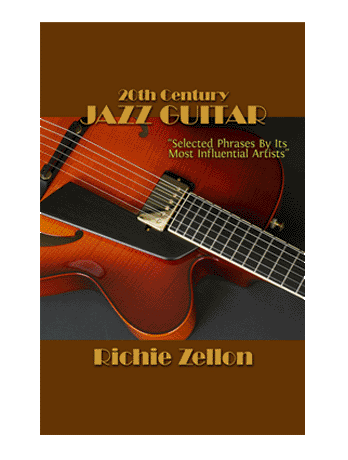Phrygian Cadences
What do tunes like Miles Davis’ “Nardis”, Wayne Shorter’s “Speak No Evil”, and Chick Corea’s “Spain” & “La Fiesta” have in common? That they all employ phrygian modal cadences, also the subject of this video!
In this lesson, not only do I give you examples of both phrygian minor and major cadences within several standards, but I also show you how to use them to re-harmonize segments of some of your favorite standards. Finally, I show you how to easily improvise over these cadences while adding a touch of Spanish Flamenco to your solos…OLE!
INDEX
09:00 Intro
00:57 About Part 1
01:13 What is a “Cadence”?
02:09 Types of Phrygian scales
02:48 Phrygian Major and Minor Cadences
03:21 Example of music containing a Minor Phrygian Cadence
03:52 Example of music containing a Major Phrygian Cadence
04:59 How does this fit into jazz?
05:10 Examples of jazz standards containing a Phrygian Cadence
07:15 How to reharmonize using both Phrygian Cadences
08:02 Examples on how to reharmonize a standard
11:37 How to improvise over Phrygian Cadences
12:11 Example of improvisation over “Summertime”
13:11 Like, Share & Subscribe
(You must be logged in for access to Lesson Downloads) [Content protected for Jazz Guitarists Series members only]
Suggested:
Dorian Cadences
4 Comments
Submit a Comment
You must be logged in to post a comment.

Excellent two part series on modal reharmonization. I know you tried to be less academic, but I needed to know more. I’ve looked up my resource that deals with modal cadences from three minor modes (Dorian, Phrygian, and Aeolian) and from two major modes (Lydian and Mixolydian).
So, each mode contains a characteristic note that represents the heart of its unique sound, and the diatonic chords that contain the mode’s characteristic note are referred to as characteristic chords. Now, a modal cadence is created when a characteristic chord is used to approach a I chord in a particular mode.
I have a couple of questions. The Phrygian mode’s characteristic note is b2. Am I correct in assuming the same applies to the Phrygian Major (Dominant)?
The second question has to do with ‘modal thinking’ when improvising. I know I’m simplifying it, but theoretically speaking, is the idea to basically meander around a mode emphasizing its characteristic note?
Glad you enjoyed it! As far as the b2 being the characteristic note, I don’t necessarily see it as a defining factor when outside of a specific harmonic context. If you play the phrygian with no accompaniment it can sound like a related mode such as the ionian or aeolian. It’s the modal cadence played with the background chords such as Em-Fmaj7#11-Em that ultimately defines its modal character.
Thanks Richie. I just mentioned the characteristic note, chords and how the modal cadence is derived as I came across these concepts in the Berklee Press publication on “Reharmonization Techniques.” It helped me understand the why, but as you say, it’s the modal cadence played with the background chords that ultimately defines its character.
No problem, I guess I didn’t quite understand what you were asking me 🙂